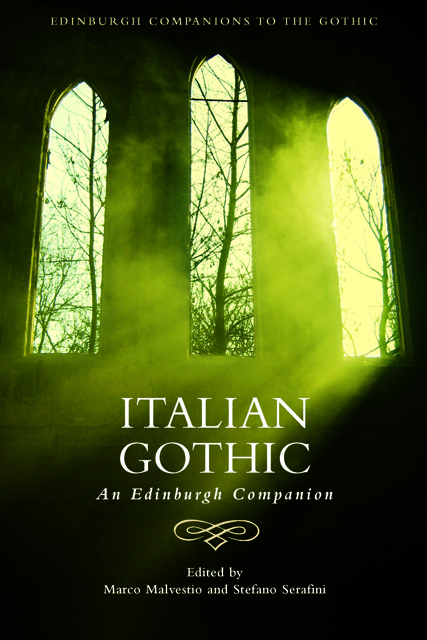14 - Gothic Criminology
Published online by Cambridge University Press: 20 October 2023
Summary
Criminology, due to its inherent association with deviance and transgression, is particularly prone to Gothicisation. It is not a coincidence that it originated in the second half of the nineteenth century, in conjunction with the resurgence of the Gothic novel, and that its founding father was the Italian physician Cesare Lombroso, who has been labelled by historians of crime Nicole Rafter and Per Ystehede as a truly ‘Gothic scientist’ (265). Lombroso's highly controversial theories of deviance as biologically determined and identifiable on the basis of physical traits – expanded and developed by his collaborators, who formed the famous Italian school of criminal anthropology – transcended national and disciplinary boundaries, reinforcing the symbiotic relationship between biology and transgression that continues to haunt contemporary Western cultures.
Lombroso's science aroused so much interest, attracting and repulsing at the same time, not only because it was built on common prejudices and widespread anxieties that were fuelled by literature and the press, but also because it was imbued with Gothicism. As Rafter maintains, Lombroso shifted criminology's focus ‘away from the mind (a construct compatible with the idea of an immortal soul) to the brain (an organ whose physicality ruled out metaphysical speculation of any sort)’ (87), thereby severing criminology's connection with morality and religion. His theories destabilised accepted boundaries and traditional assumptions about human identity and sexuality, converting ‘Gothic anxieties’, such as the spectre of degeneration, the bestiality within humans, and the divided nature of the self, into ‘scientific concerns’ (Rafter and Ystehede 276).
Starting from the premise that the fin de siècle was distinguished by the interplay of scientific and Gothic discourses, in this chapter I will explore precisely why and how Lombroso's criminology is deeply Gothic in its methods, applications and implications. Focusing on the literary, visual and occult components of Lombroso's multifarious and far-reaching work, I will seek to show how Gothic narratives on the construction of deviance influenced Lombroso's criminological thinking, ultimately transforming the transgressor from, in Karen Halttunen's perceptive words, a ‘common sinner with whom the larger community of sinners were urged to identify in the service of their own salvation’ into a moral monster ‘from whom readers were instructed to shrink, with a sense of horror that confirmed their own “normalcy” in the face of the morally alien’ (4–5).
- Type
- Chapter
- Information
- Italian GothicAn Edinburgh Companion, pp. 210 - 224Publisher: Edinburgh University PressPrint publication year: 2023



